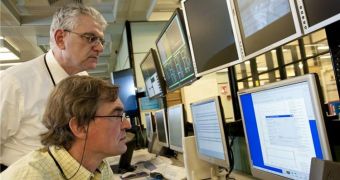Physicists with the Joint European Torus (JET) announce that the first experimental campaigns have begun at the large tokamak. The studies are meant to pave the way for future nuclear fusion reactors, including DEMO and the troubled ITER.
JET was shut down for a while, as engineers installed the “ITER-Like Wall” upgrade. During this time, new materials were added to the tokamak, as well as more diagnostics systems, more heating power and other upgrades.
Fusion power as widely considered to be a safe, clean, and virtually limitless energy source for future generations, which is why so many European researchers are participating in the UK-based studies.
If experiments conducted on JET are successful, then larger experimental reactors will be built on the same principles, in effect producing the world's first nuclear fusion power plants. This effort is being coordinated by the European Fusion Development Agreement (EFDA).
With the new upgrade complete, the reaction vessel inside the tokamak is made up of interlocking beryllium and tungsten tiles. This arrangement is what experts refer to as the “ITER-Like Wall.” The entire effort was conducted using remote handling technology.
It took engineers from the Culham Center for Fusion Energy from October 2009 to May 2011 to replace all the components that needed to be upgraded. In total, they removed, replaced or repaired as much as 86,000 pieces of equipment.
This allows JET an increase in overall heating power of no less than 50 percent above previous levels. When it comes to getting hydrogen isotopes to fuse, nothing beats the efficiency of high temperatures, combined with extreme pressures in the containment vessel.
“This is probably the largest effort that has been put into JET apart from the construction of the machine itself. With the expertise and contribution of many fusion laboratories, the JET team has succeeded in building a small ITER,” expert Francesco Romanelli says.
“We had a very good start with high purity plasmas readily established in ITER relevant conditions – a promising sign for the use of these wall materials in ITER,” adds the expert, who is the EFDA leader.
“The coming experiments will aim to verify that the wall materials chosen for ITER will behave as expected,” concludes the head of the EFDA JET Department, Lorne Horton, quoted by AlphaGalileo.

 14 DAY TRIAL //
14 DAY TRIAL //